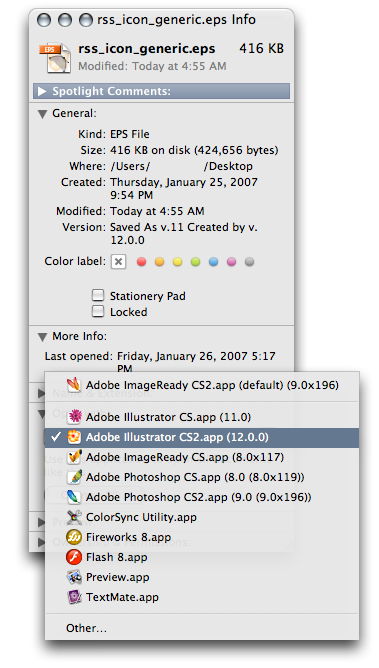
- MAC CHANGE DEFAULT APP FOR EXTENSION MAC OS X
- MAC CHANGE DEFAULT APP FOR EXTENSION INSTALL
- MAC CHANGE DEFAULT APP FOR EXTENSION SOFTWARE
- MAC CHANGE DEFAULT APP FOR EXTENSION LICENSE
Furthermore, they deliver none of the functionality promised and are designed only to generate revenue for their developers. Typically, they are promoted as 'useful' - supposedly provide users with tools, features, and so on, however, having apps of this type installed usually leads to problems.


There are countless apps that hijack browsers and change settings. Combo Cleaner is owned and operated by Rcs Lt, the parent company of read more.
MAC CHANGE DEFAULT APP FOR EXTENSION LICENSE
To use full-featured product, you have to purchase a license for Combo Cleaner. Our security researchers recommend using Combo Cleaner. To eliminate possible malware infections, scan your Mac with legitimate antivirus software. Internet browser tracking (potential privacy issues), displaying of unwanted ads, redirects to dubious websites, loss of private information.
MAC CHANGE DEFAULT APP FOR EXTENSION SOFTWARE
Your Mac becomes slower than normal, you see unwanted pop-up ads, you are redirected to dubious websites.ĭeceptive pop-up ads, free software installers (bundling), fake Flash Player installers, torrent file downloads. Having them installed on your system might cause privacy/browsing safety issues or even lead to identity theft. We recommend that you uninstall all potentially unwanted apps immediately.
MAC CHANGE DEFAULT APP FOR EXTENSION INSTALL
When clicked, they redirect people to untrustworthy (or even malicious) websites or execute scripts designed to download and install unwanted apps. Most of these applications serve users with intrusive, deceptive ads such as pop-up ads, coupons, banners, surveys, and so on. Remember that MacAppExtensions is installed through adware-type apps already present on the system. Some of the shared data might contain personal details. Developers share the data with third parties (potentially, cyber criminals) who misuse it to generate revenue. It gathers geolocations, entered search queries, URLs of visited websites, IP addresses, and so on. Another problem with having MacAppExtensions installed is that this app (and and associated adware) records information relating to users' browsing habits. It simply redirects users to (a legitimate search engine belonging to Yahoo). Note that is a fake search engine that provides no unique results. Therefore, people with MacAppExtensions installed are forced to visit when they open a browser, new browser tab, or search using the URL bar. Once installed, MacAppExtensions appoints as the homepage, search engine, and new tab URL. Most PUAs can be installed on Safari, Google Chrome, and Mozilla Firefox. Once installed, MacAppExtensions hijacks browsers (changes settings) and gathers information relating to users' browsing activity. MacAppExtensions is a potentially unwanted application (PUA), a browser app installed by adware-type apps that are already present on the Mac system or browser. If you want to hide file extensions again, simply open the Finder Preferences window and uncheck the box.How to remove MacAppExtensions browser hijacker from Mac? All file extensions will now be visible both on the desktop and in open windows. Then click on the Advanced tab in the Finder Preferences window as shown below:įinally, check the "Show all file extensions" box. To do this, click on the desktop to activate the Finder if is not already active and select " Preferences." from the Finder menu.
MAC CHANGE DEFAULT APP FOR EXTENSION MAC OS X
While Mac OS X hides file extensions by default, you can choose to show all file extensions, overriding the "Hide extension" setting in the "Get Info" window. If the file's extension is already hidden and you would like to show it, uncheck the "Hide extension" box. If you would like to hide the file's extension, click the "Hide extension" checkbox. Notice the section towards the top of the window that says "Name & Extension." When the information window opens, it should look something like this: Or you may right-click (Control-click) the file and select "Get Info" from the contextual menu that pops up. You can do this by selecting the file and clicking "Get Info" from the File menu. If you want to show or hide an extension for a single file, first open the file's information window. Mac OS X allows you to show or hide file extensions for individual files or display extensions for all files.


 0 kommentar(er)
0 kommentar(er)
